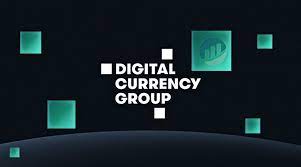Explore the huge potential of multi-parallel Dai and what changes will be brought by the introduction of MCD
Author: Lou Kerner
Compilation: Share Finance Neo
Summary: Discussing Multiple Collateral Dai
Recently, CryptoMondays and DeFi NYC hosted a conference call on multi-collateral Dai with four DeFi thought leaders:
- New Deal full moon, official media blockchain reports have shifted from "science popularization" to anti-counterfeiting supervision
- Viewpoint | Departure at the End: Ethereum EIP and Upgrade Process Improvement Proposals
- Viewpoint: The blockchain situation is always erratic, because its origin has a great relationship with the hacker culture
Steven Becker, President and Chief Operating Officer, Maker Foundation
Allison Lu, Co-Founder and Chief Operating Officer, UMA
Tim Ogilvie, Co-founder and CEO of Staked
Robert Leshner, Founder and CEO of Compound It was a very interesting and informative conference call where they exchanged views on the huge potential of multi-guaranteed Dai and the future of DeFi.

You can save some time by reading our five highlights:
1.Achieved a vision-With the introduction of MCD, the Maker agreement now includes two financial principles needed to create an economic engine
Steven Becker said that Maker's vision of building a chain economy engine is based on creating two financial pillars: guarantees and credit creation. In the case of a single collateral, only credit generation is completely valid, as the collateral is limited to ETH. Now that the Millennium Development Goals are in place and both principles are in place, the Protocol can serve as an engine for growth and development in emerging economies.
2. By enabling real-world assets to be used as collateral, MCD solves two of Dai's biggest problems
When enabling new cryptocurrencies, like BAT as collateral, it increases the diversity of Dai's basic assets. Cryptocurrencies are often highly related to each other today, so it cannot really solve the need to reduce the volatility brought by real world assets. Asset diversity.
In proving asset diversification, Allison Lu showed a chart showing that the Colombian peso is highly correlated with crude oil prices because the Colombian economy is heavily dependent on oil exports:

How the Colombian peso keeps pace with oil prices
In addition, the current cryptocurrency market size is about $ 200 billion, which is still small. Therefore, enabling real-world assets that are "packaged" by ERC-20 tokens can be used as collateral, enabling this market to expand on a large scale before the cryptocurrency market expands.
Among the infinite potential real-world assets that can be labeled, Steven mentions "dead capital", a term coined by Peruvian economist Hernando de Soto Polar to denote emerging and informal Approximately $ 9 trillion in real estate-related assets held and therefore not legally recognized. Therefore, "dead capital" is difficult to lend or lend. Steven also believes that supply chain finance, that is, tokenizing invoices, can not only make the ratio of loans to invoices lower, but also lead to innovation in supply chain finance.
3. Putting real-world assets on the chain can realize the innovation of various capital structures
Traditional debt financing and equity financing will give way to finer-grained claims, requiring companies to provide a wider range of capital options. New tokens can claim revenue streams or specific assets within the organization. These new asset types can also be used as new types of guarantees.
4.Dai Savings Rate (DSR) introduces no trust rate
You can lock your Dai in a smart contract and earn interest through the Dai Deposit Rate (DSR). According to the results of the Maker governance vote on November 15, the DSR is currently 2%.
Arbitrage is the first level of balance mechanism to maintain the balance of supply and demand in the Maker protocol. Stability fees and DSR are the second level of balance mechanism to balance supply and demand.
The depth of DSR is that when you lock it in a smart contract, you still own it. So there is no counterparty risk. Risk is inherent in a decentralized agreement. Therefore, DSR is not risk-free, but it is trustless because there are no counterparties that need to be trusted to fulfill its obligations. Allison Lu talked about corporate governance risks, and she wondered if procedures such as liquidation would be controversial in court?
5.The risk reflected in the loan interest rate should decrease over time
Staked Group's Tim Ogilvie shared this slide showing the difference in lending rates on 10-year U.S. Treasuries and DAI:

Tim provided three reasons why investors can get higher interest rates on loans from the government (through Staked):
Capital Constrained-There are not many easy ways to use “arbitrage trading” (arbitrage opportunities between two interest rates) to obtain large amounts of capital.
Underlying asset risk-ETH and BAT,
Immature concerns-smart contract risks, divestment, regulatory threats …
Obviously, all of these risks will decrease over time.
6.Expect unexpected
Robert Leshner's words resonated with me. The fact is that we are in unknown waters, and our only certainty is that no matter what DeFi will be, it is different from what anyone thinks it will be. Just like everything else.
We will continue to update Blocking; if you have any questions or suggestions, please contact us!
Was this article helpful?
93 out of 132 found this helpful
Related articles
- Beijing News: Virtual currency speculation shows signs of rise
- DeFI: What should the future of open finance look like?
- Market analysis: When the news is flying around, we have to keep calm
- Supervision and oversight of regulatory oversight have paved the way for the healthy development of the blockchain industry
- Dialogue Nobel Laureate in Economics: If Facebook dominates Libra, power may be greater than US president
- Everbright Securities Global Chief Economist: Platform digital currency is systemically important, and central bank digital currency has public policy value
- Visit the country's first "Blockchain + Big Data + Education" project: What happens when education meets the blockchain?






